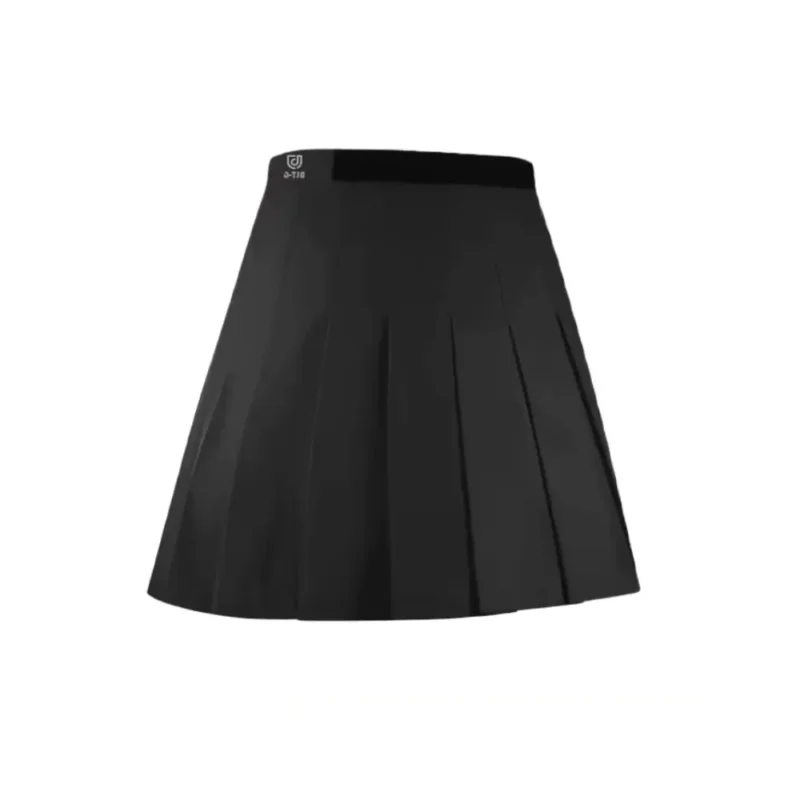Výroba sukní je nejvýznamnějším příkladem kritické transformace módního průmyslu. Rok 2025 je bodem, kdy udržitelnost překročí status trendu a stane se celosvětovým měřítkem. Distributoři oděvů spolu s velkoobchodníky a manažery nákupu zjišťují, že přijetí ekologicky uvědomělých linií sukní představuje jak povinnost, tak příležitost k získání tržní výhody. Co musí návrhář vědět, aby vytvořil udržitelnou řadu sukní, která splňuje měnící se požadavky moderního uvědomělého trhu?
Tento kompletní průvodce poskytuje postupné pokyny pro udržitelný design sukní, které zahrnují prvky od výběru ekologicky šetrných tkanin po minimalizaci produkce odpadu a budování etických výrobních postupů s efektivními metodami komunikace se zákazníky. Když přizpůsobíte své obchodní postupy současným prioritám v oblasti životního prostředí, snížíte svou ekologickou stopu a zároveň zvýšíte svou atraktivitu na trhu a získáte důvěru zákazníků, což vám časem přinese lepší finanční výsledky.
Pochopení udržitelnosti v módě: rok 2025 a dále
Proč udržitelnost již není volitelná
Mezinárodní dodavatelské sítě v oblasti módy čelí zvýšené kontrole. Vlády zavádějí přísnější ekologické zákony a spotřebitelé nyní vyžadují etickou transparentnost. Kolekce sukní, které tyto normy nedodržují, budou pravděpodobně staženy z hlavních trhů.
- Šest z deseti spotřebitelů na celém světě dává přednost nákupům u značek, které upřednostňují udržitelnost.
- V celé Evropské unii a Severní Americe sílí regulační síly.
- U značek, které zavádějí udržitelné postupy, se zvyšuje míra udržení zákazníků a jejich spokojenosti.
Výrobci i kupující si musí osvojit udržitelné postupy, aby si udrželi svou přítomnost na trhu.
Standardy udržitelnosti, které by měli distributoři sledovat
Mezi klíčové rámce patří:
- OEKO-TEX®
- Globální standard pro ekologický textil (GOTS)
- GRS (Global Recycled Standard)
- Certifikace B Corp
- ISO 14001 pro environmentální management

Výběr správných udržitelných tkanin pro sukně
Základ ekologického designu
Výběr látky určuje dopad vaší kolekce sukní na životní prostředí. Výběr materiálů, které jsou certifikovány jako materiály s nízkým dopadem na životní prostředí nebo jsou vyrobeny z recyklovaných zdrojů, zaručuje, že každá sukně podporuje životní prostředí.
Nejlepší udržitelné tkaniny pro výrobu sukní:
- Organická bavlna: Bez chemických látek, biologicky odbouratelný, prodyšný.
- Tkanina Tencel™ (Lyocell) pochází z dřevní buničiny a má biologicky odbouratelné vlastnosti a měkkou strukturu.
- Konopí: Rychle rostoucí, nenáročný na vodu, odolný.
- Recyklovaný polyester (rPET) zabraňuje vnikání plastového odpadu do oceánů a na skládky.
- Povlečení: Na bázi lnu, s nízkou zátěží, pevný a biologicky odbouratelný.
Zohledněte gramáž látky a průsvit
Pro jednotlivé styly sukní, včetně modelů áčkových, tužkových a plisovaných, jsou nutné různé gramáže a toky látek. Sladěte udržitelné materiály s vysokým výkonem, abyste uspokojili požadavky zákazníků a snížili míru vrácení.
Zavádění strategií návrhu snižujících množství odpadu
Tvorba vzorů bez odpadu
Díky bezodpadovým nebo minimálně odpadovým technikám stříhání mohou výrobci výrazně snížit množství zbytkové látky. Tato metoda:
- Snižuje výrobní náklady
- Zlepšuje ekologické reference
- Podporuje štíhlou výrobu
Modulární design pro všestrannost
Možnost stylizovat modulární sukně mnoha způsoby snižuje nákupní zvyklosti spotřebitelů. Například:
- Tato zavinovací sukně slouží jako sukně i šátek.
- Nastavitelné délky
- Oboustranné vzory
O tento přístup projevují zájem minimalisté a ekologicky smýšlející kupující.
Etická výroba: Co očekávají kupující v roce 2025
Nad rámec spravedlivé mzdy: Plný etický dohled
Distributoři a velkoobchodníci požadují plnou transparentnost. Vaše výrobní procesy musí zahrnovat:
- Spravedlivé mzdy a bezpečné pracovní podmínky
- Žádná dětská práce
- Rovnost žen a mužů při přijímání zaměstnanců a odměňování
- Tovární certifikace
H3: Na sledovatelnosti záleží
Dokumentace musí zahrnovat všechny fáze výroby sukně od surovin až po konečné balení. Transparentnost buduje důvěru.
Ekologicky šetrné dokončovací techniky
Udržitelné barvení a tisk
Tradiční barvení je náročné na vodu a toxické. Přijmout:
- Přírodní barviva (rostlinná)
- Digitální tisk s nízkou spotřebou vody
- inkousty a techniky certifikované GOTS
Vaše kolekce sukní se stanou atraktivnějšími pro kupující, kteří upřednostňují odpovědnost k životnímu prostředí, pokud přidáte hodnotu prostřednictvím udržitelných postupů.
H3: Recyklovatelné a kompostovatelné obaly
Nikdy nepřehlédněte obal. Pro balení zvolte kraftové papírové pásky a visačky ze semínkového papíru nebo biologicky rozložitelný plast. Komplexní zážitek z výrobku přináší konzistentní podporu vašeho sdělení o udržitelnosti.
Sladění designu sukní s hodnotami spotřebitelů
Funkční móda je budoucnost
Navrhněte sukně, které nabízejí:
- Nastavitelná velikost
- Vícesezónní nošení
- Nadčasové siluety
Výsledkem konstrukčního přístupu je prodloužený módní cyklus, který snižuje produkci odpadu.
Transparentnost při označování a uvádění na trh
Na každém štítku by měly být uvedeny podrobnosti:
- Původ materiálů
- Výrobní postupy
- Pokyny pro péči, které prodlužují životnost oděvů
Využití QR kódů k zajištění digitální transparentnosti se stává silným mechanismem pro zvýšení důvěry spotřebitelů a sledovatelnosti výrobků.
Uvedení na trh a marketing udržitelné řady sukní
Pozicování pro B2B kupující
Přilákat velkoobchodní partnery:
- Zdůrazněte výhody úspory nákladů (méně odpadu, opakovaně použitelné obaly).
- Zajištění přístupu k certifikaci
- Nabídka flexibilního MOQ pro udržitelné linie
Ukázky a prohlídky továren
Pokud jsou k dispozici virtuální nebo fyzické vzorky k zobrazení:
- Vzorníky látek
- Detaily prošívání
- Značky udržitelnosti
- Etické certifikace
Uspořádejte pro partnery virtuální prohlídky továrny, abyste demonstrovali své etické standardy a provozní procesy.

Udržitelné získávání zdrojů zvyšuje loajalitu zákazníků a přístup distributorů a manažerů získávání zdrojů na mezinárodní trh.
- Nižší riziko ztráty dobré pověsti
- Silnější loajalita zákazníků
- Větší přístup na mezinárodní trhy
- Podniky získají oprávnění ucházet se o zakázky institucí a vládních institucí.
- Příležitost pro zboží s vyšší marží s ekologickým značením
Závěr
Udržitelnost není jen budoucnost - je to současnost. Vytvořením linie sukní do roku 2025, která dodržuje požadavky na udržitelnost, dosáhnete dlouhodobého obchodního úspěchu i příležitostí na globálním trhu a zároveň získáte silnou důvěryhodnost.
Ať už jste distributor, velkoobchodník nebo manažer zásobování, přijetí těchto udržitelných postupů vám pomůže udržet si náskok a zároveň uspokojit stále více ekologicky uvědomělý trh.
🔗 Máte zájem spustit vlastní řadu udržitelných sukní?
Kontaktujte náš tým ještě dnes a prodiskutovat s vámi vaše potřeby výroby na zakázku.
📧 Napište nám na e-mail: info@modenly.com
📞 Zavolejte nám na: 0800 123678
🌐 Navštivte: https://modenly.com
Nejčastější dotazy
Q1: Jaké je minimální objednací množství (MOQ) pro udržitelné sukně?
Nabízíme flexibilní MOQ v závislosti na typu tkaniny a složitosti designu. Kontaktujte nás pro podrobnosti přizpůsobené vašim potřebám.
Otázka 2: Mohu si pro svůj návrh sukně vyžádat vlastní látky nebo lemy?
Rozhodně. Nabízíme plně přizpůsobené možnosti výroby, včetně udržitelného získávání látek, vlastních lemů a balení.
Otázka 3: Poskytujete certifikace udržitelnosti?
Ano, spolupracujeme s certifikovanými dodavateli a na požádání můžeme poskytnout certifikáty GOTS, OEKO-TEX® a GRS.
Otázka 4: Jak dlouho trvá vývoj nové řady sukní od návrhu po vzorek?
Průměrná doba pro vytvoření prototypu je 3-4 týdny v závislosti na složitosti návrhu a dostupnosti látky.
Otázka 5: Mohu navštívit váš závod nebo si domluvit video audit?
Ano, vítáme návštěvy na místě i videoaudity. Náš tým vám může poskytnout virtuální prohlídku s průvodcem, která vám bude vyhovovat.
Dejte mi vědět, zda chcete tento článek přidat na své webové stránky jako příspěvek ve WordPressu s interními odkazy, nebo zda chcete, abych vytvořil druhý článek ze shluku obsahu.

